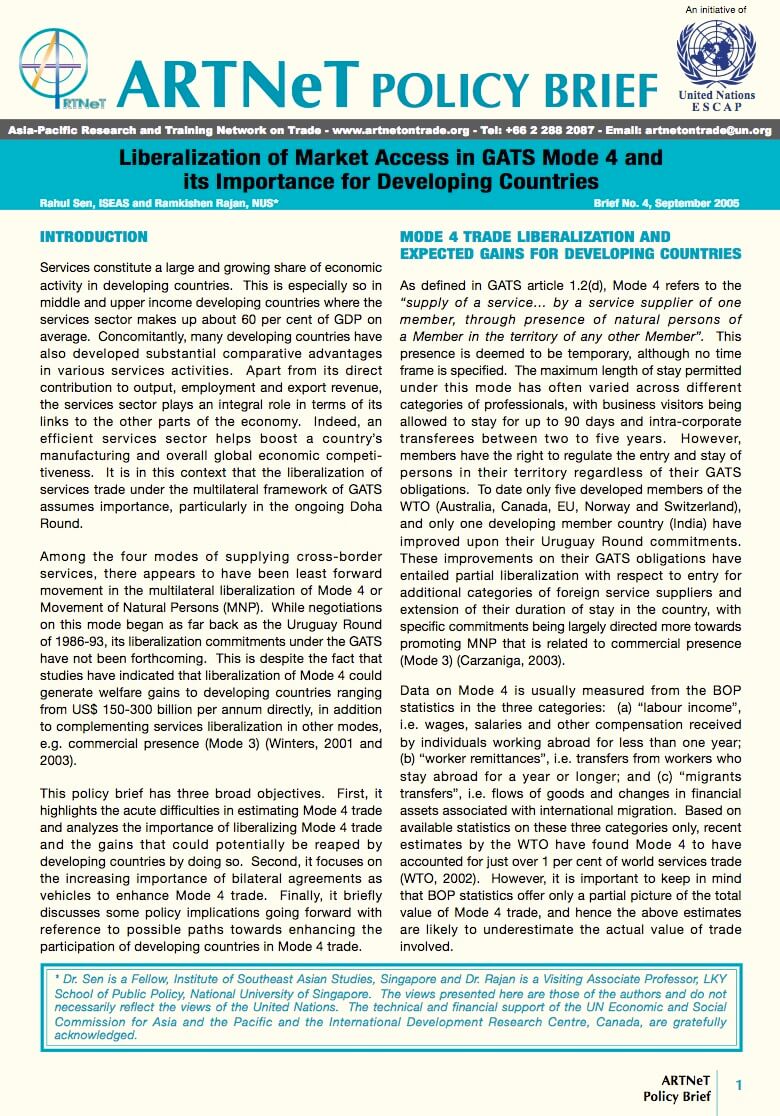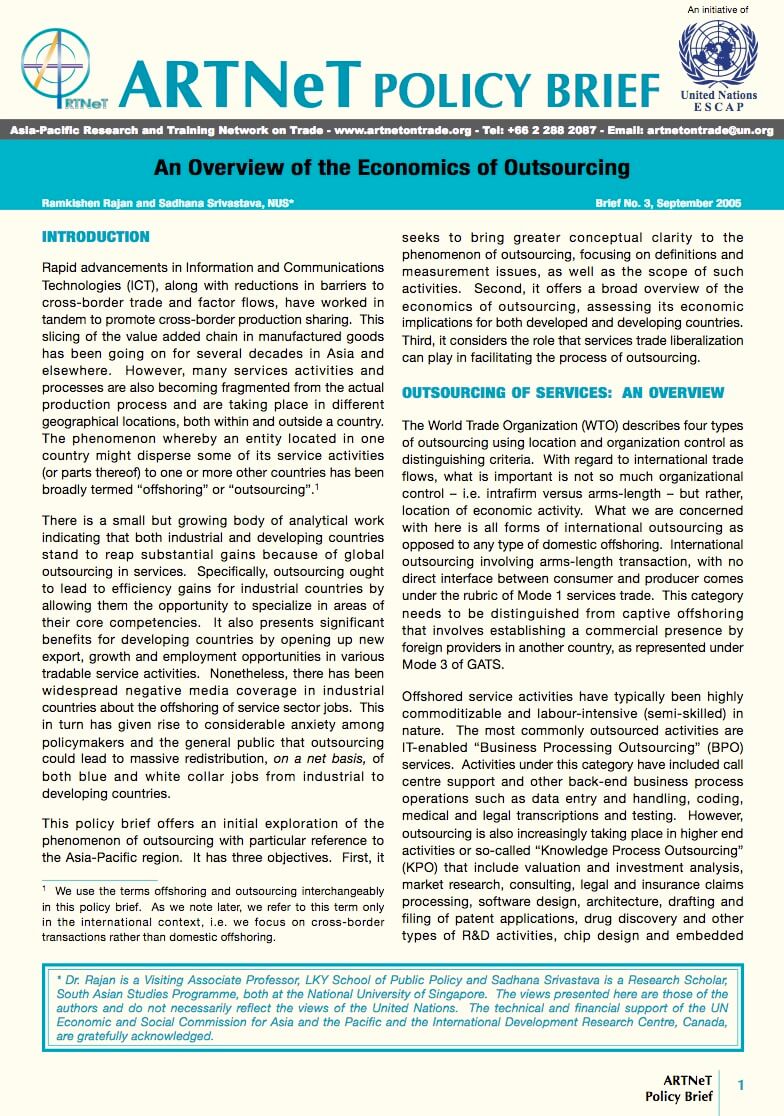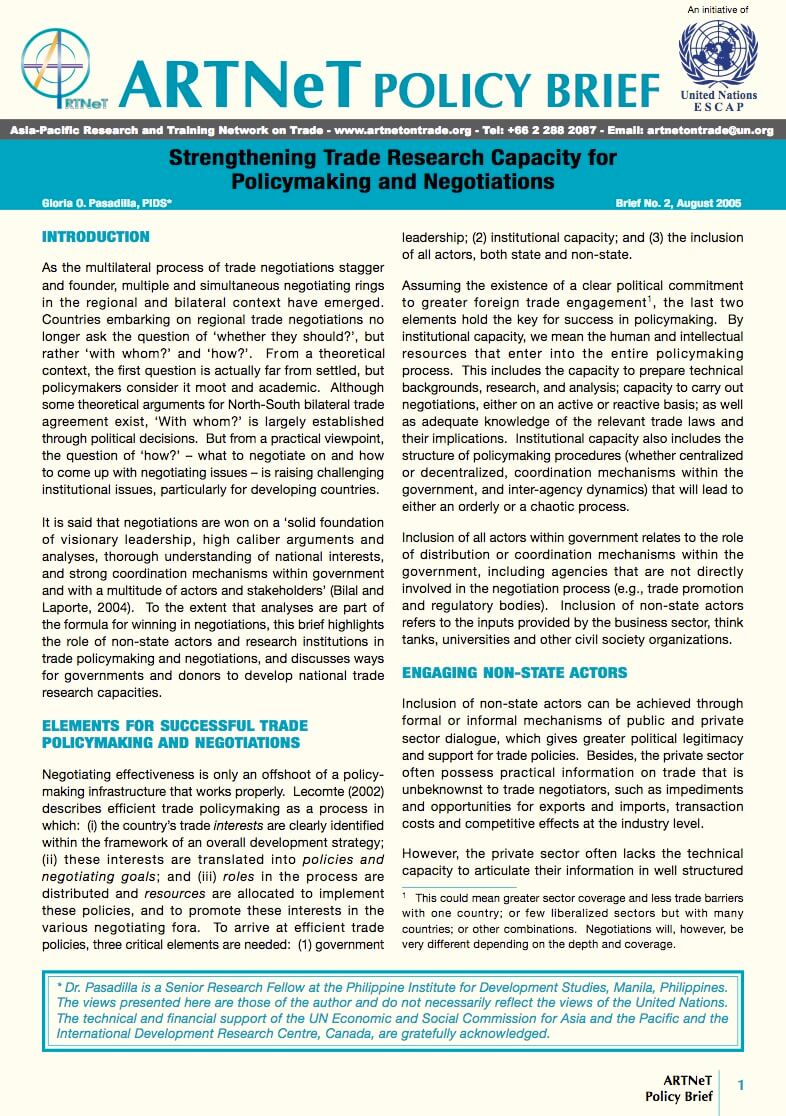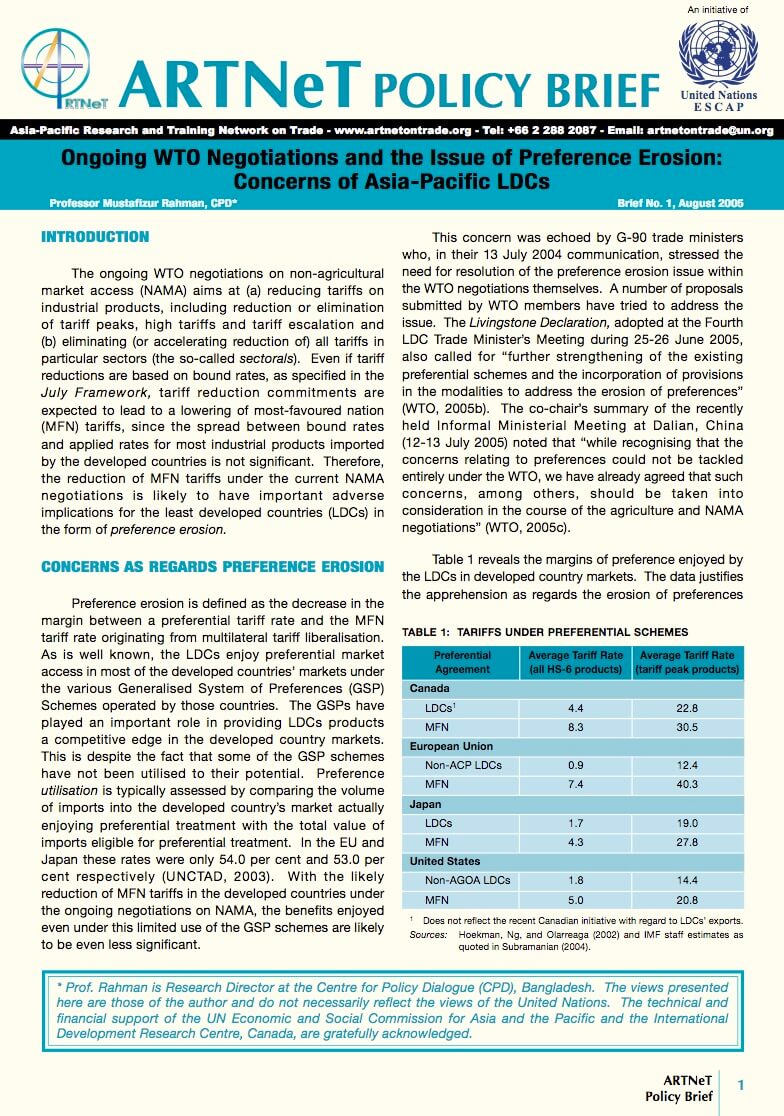Formulas for Industrial Tariff Reduction and Policy Implications
A key element of the Doha Development Agenda (DDA) negotiations under the WTO is the liberalization of trade in industrial products, so-called non-agricultural market access (NAMA). The mandate on the NAMA negotiations is contained in Paragraph 16 of the Doha Ministerial Declaration which aim(s), by modalities to be agreed, to reduce or as appropriate eliminate tariffs, including the reduction or elimination of tariff peaks, high tariffs, and tariff escalation, as well as non-tariff barriers, in particular on products on export interest to developing countries (WTO, 2001).





